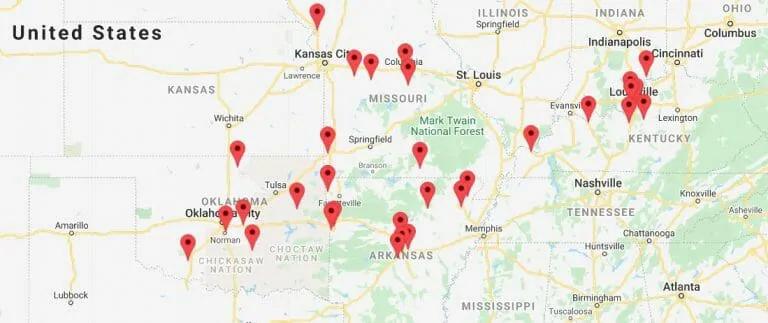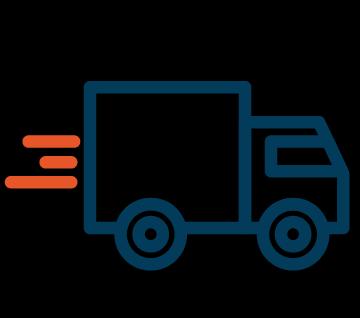Shopify API Integration to ERP Software for Furniture Retail


The Motive Behind Large-Scale ERP Integrations
For large-scale eCommerce operations, adopting savvy tools and new tech can bring high efficiency closer within reach. One specific solution rarely fits all companies, but sometimes the same idea can be applied across the board. A larger business may share the same duties as a small company, but these functions operate at a much bigger scale, and at faster speeds.
This is where eCommerce automation can help stores of any size.At Endertech, we’ve seen how building a virtual infrastructure that connects vital parts of a business empowers decision making and increases efficiency. Real-time information like product inventory, sales tracking, and customer feedback are super important and make for faster and easier decision making.
This was the driving motive behind our recent case with FFOHome.com. They’re a 60+ location business who’s Shopify based website required a good boost along with other custom integrations. Their previous web setup was managing operations with small “hiccups,” but not overdelivering on any front. To gain efficiency within the multi-store infrastructure, several tasks were necessary.
ERP Implementation
Shopify and ERP Integration
Shopify Fulfillment Automation
FFO’s home decor business was ready for their virtual makeover. Upgrading their inventory and sales tracking with Shopify and their ERP system was the first step. To produce more fast, reliable and secure business functions, connecting their product and sales network was necessary. You’ll read how their new custom ERP integration helps manage in-store pickups, exchanges, refunds, cancelling sales and fraud prevention.
Earlier, I spoke on the idea of a virtual infrastructure and maybe you’re wondering what this looks like. For FFO, it’s tracking and sharing sales and inventory data with new and existing web integrations across all locations. The goal of building this space is not only to collect data, but develop communication lines between sales and inventory channels.
60+ Locations, No Problem for the API

Working closely with their savvy branding agency, the first step of the upgrade included their POS software implementation of the locations. Their POS system is a software uniquely created for furnishing companies to manage inventory and is suited for single and multi-location businesses.
To manage this successfully, FFO’s API was carefully examined to make proper connections between each locations’ inventory and their API mainframe. The number one goal was to synch their POS inventory with their Shopify ecommerce platform. Without proper connection, a purchase in one location could mislead customers and managers elsewhere on available inventory and product delivery.
It’s not just about data collection, although it’s a plus, it’s about building the internal communication between web systems. The next step was connecting Shopify with their ERP system. This allows for sales and inventory updates to go in both directions. Their POS software communicates to the website about inventory changes, and Shopify alerts back to the POS software about a purchase, on-site or online. With this integration sales and inventory data or instantly exchanged.
Because we integrated new inventory tracking software, over 1,500 SKU’s (stocking keeping units) needed to be implemented for their ERP and Shopify to share. This allows the ability to identify inventory and make necessary updates between systems when necessary.

Parallelism Between Shopify and ERP Systems
To manage inventory tracking and sales updates amongst the 70 store locations, the practice of parallelism is necessary. Although it’s complex to implement, the idea is simple. Parallelism allows multiple threads (sales and inventory data) to process on schedule, that update inventory per location in parallel. E.g., if they purchase two items in different locations, it allows for both purchases to be called and updated in uniform without confusion.
What’s thrilling about this coordination between stores and systems is the amount of API calls taking place. For every restock, returned item, online or in-store purchase or canceled sale, there’s a call that’s created to update both systems.
This process demands a managing system for a smooth operation that is reliable, scalable and secure. The parallel system regulates how many threads can run to balance performance between both systems. This implementation prevents collisions and automates the schedule of all calls even when it involves:
Same SKU
Same Location
Same Time
The function of parallelism supports their ERP system and Shopify network no matter the increase in transactions, easing any worry of future problem increases.
The Finer Details of eCommerce Automation
Finally, our Shopify and ERP developers included two additions to the integration that many eCommerce owners might claim are must-haves: a complete Fulfillment Integration system and the addition of Nested Kits for select products.
First, the fulfillment API integration required building a process to monitor fulfillment status and record when orders are closed or open. This relates to final payments, in-store pickups, canceled orders, or shipped items. Instead of immediately finalizing sales and unnecessarily updating data between systems, it’s held open until products are:
Shipped
Canceled
Picked-up
Exchanged at pickup
With any cancelations or exchanges, we developed a Reason Code to mark the reason for processing a refund. This eliminates unnecessary data updates and further assures accuracy between both systems.
A new inventory feature includes Nested Kits, which allows products to be included in purchases, but aren’t necessarily sold separately. This can sound confusing but these are better known as Kits and Soft Kits. For example, a six-drawer cabinet would be labeled a Kit, while each of its drawers a separate Soft Kit.
Even though they cannot be sold separately, each drawer requires a number for proper tracking and management. This type of tracking detail was possible through custom code by our developers. The new capability also allows the client to manage non-inventory items, like warranty sales. Again, everywhere we added features, we improved efficiency and accuracy.
API Automation Between Sales and Inventory
Our developments made possible the automation of secure tracking of inventory and sales data between their important systems, their ERP system and Shopify API. This included fulfillment features to track and close orders, and adding further structure with Nested (Grouped) Kits capabilities, Reason Code for proper refund actions, and the ability to mark items as non-inventory managed products.
The integration helps to bring real-time updates across their regional locations and warehouses, which increases efficiency, reduces costs and improves the customer experience. Plus, the Shopify and ERP integration creates more reliable data, empowering local and regional managers to make better and faster decisions.
Endertech developers have expert knowledge in connecting a wide range of ERP systems and ecommerce platforms. Click the contact link to discuss your project, or review similar examples of our work. We’re here to help!

